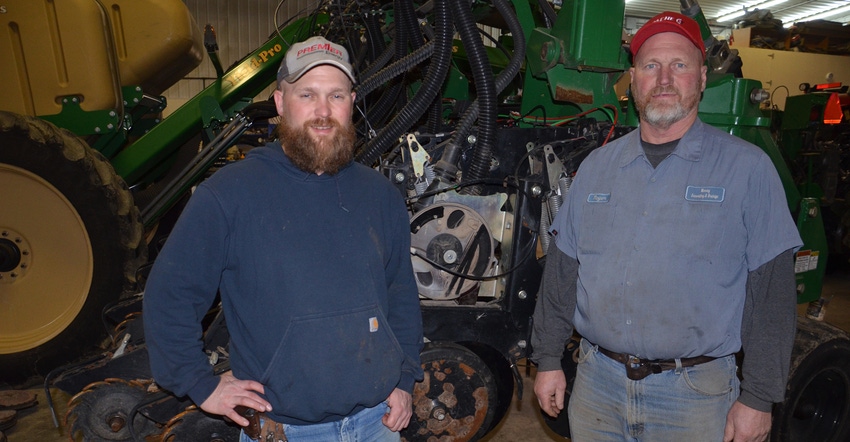
If you visit Roger and Nick Wenning’s farm in eastern Decatur County, Ind., this spring, you might find the planter in the field in mid-April if conditions are right. It will be a Great Plains twin-row planter, and it will likely be no-tilling into a green cover crop.
Here’s the shocker. If you look closely, you’ll notice that the ProBox is labeled as soybean seed, not corn. It’s still April: Is it a mistake?
It’s no mistake, says Nick, Roger’s son. “Our plan is to plant soybeans first, then plant corn,” he explains. “We’ve had better success planting corn in early May. It comes up faster and gets going quicker.”
Roger says if he could pick one day to plant all his corn, it would be May 10. Since that isn’t practical, if the weather forecast is favorable, they might plant some corn in very late April or early May.
OK, but soybeans in April? “If soil conditions are right, we would target April 15 to no-till soybeans with the same planter,” Roger says. “We haven’t seen issues planting soybeans early.”
Right conditions
The key may lie in soil conditions, Roger believes. He’s convinced that if corn is planted when soils are a bit wet, soil compaction and other issues hold corn back.
“I believe that the penalty for planting corn into soils that are a bit too wet is greater than the penalty in delaying planting corn later into May,” he says. “When corn goes into soils which are wetter than you like, you don’t close the seed trench properly. You may also create sidewall compaction. It can be a killer in terms of getting corn off to a quick start.”
The Wennings find that planting into a green cover crop works well in their soils. “Letting the cover crop grow longer helps dry out soils in wet springs because living plants take up moisture,” Nick says. In fields going to corn with both annual ryegrass and crimson clover, they typically kill the ryegrass and let crimson clover continue growing, and then plant into it green. They spray and burn it down after planting.
“We believe that by letting clover grow longer, we get more nitrogen fixed for use later in the season,” Roger says.
Risk and reward
Following the strategy of planting soybeans first and holding off on planting corn until early May isn’t without risk. The biggest part of the gamble is that if you wait until May 10 and soil conditions aren’t right, you may be waiting much longer. In 2017, many people found themselves planting corn in late May and early June.
“We’re aware that we’re taking that risk,” Nick says. “For us it seems like it has worked out more times than not. We feel it’s a risk worth taking.”
In 2017, late-planted corn fared extremely well in many cases. That’s not always true. The Wennings know late-season weather is always an unknown.
About the Author(s)
You May Also Like




